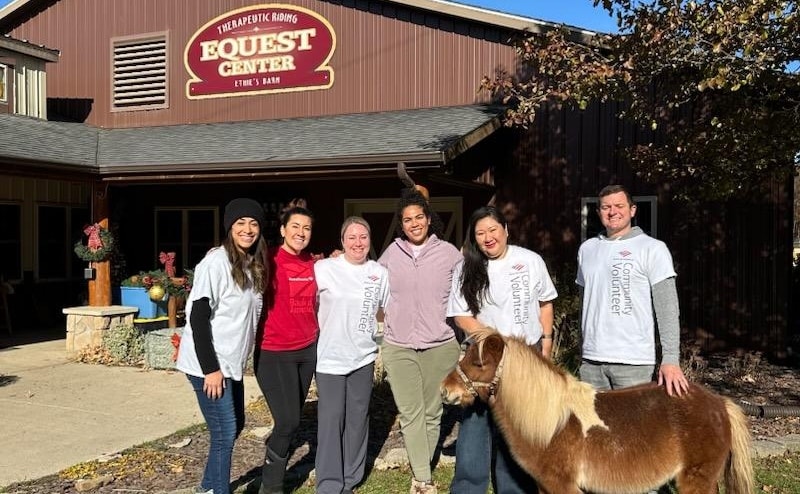Cracking the affordable housing conundrum with creative solutions
While the state of the “housing crisis” is troubled and unclear, one thing is for sure: Grand Rapids’ community isn’t lacking the potential for innovative solutions.

Affordable housing has been on the minds of many Grand Rapidians lately, from the hundreds waiting for housing assistance from Salvation Army’s Housing Assistance Program, to the City Council’s work on the Housing Advisory Committee’s Housing NOW! recommendations. While the housing market’s rebound from the recession has been a boon for many property owners and businesses, stagnant wages among the lower classes have brought the issue of affordability to a head.
As we outlined in January, although Grand Rapids residents’ earning power has increased in proportion to housing values over the last ten years, these income increases have been enjoyed almost exclusively by the upper and upper middle class. This, combined with historically low inventories on a national scale, has led to housing insecurity among our community’s most vulnerable populations, and to widespread concern over gentrification.
“We know gentrification is real and it’s happening everywhere. So what does it look like for us? What are we going to do about it? How can we get involved? It’s really about the people’s role,” Heartside resident and business owner Synia Jordan told WZZM 13 in February.
Media headlines locally, and across the country, have been ominously proclaiming a “housing crisis,” but this is only a portion of the full picture.
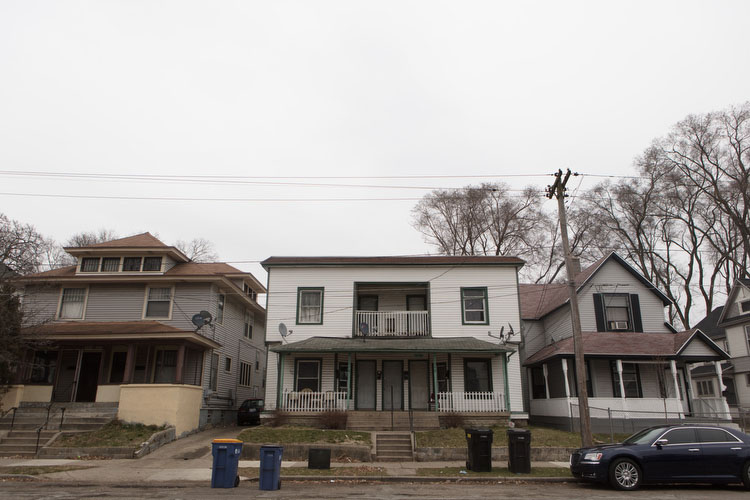
“Nationally and regionally, we really don’t have excessive rents or land costs,” confirms Lott3Metz architect Ted Lott. “What we do have is lower than average wage structures and transit systems that need to do more to contribute to a regional affordability solution. Developers are an easy, faceless target but only one piece of this puzzle.”
Throughout the city, nonprofits and private individuals have been incubating different approaches to solving this affordable housing puzzle.
Last summer, the DeVos family-funded nonprofit Amplify GR and Rockford Construction collaboratively purchased 32 properties in Boston Square, Cottage Grove, and Madison Square neighborhoods with the intention of bringing “additional quality and affordable housing opportunities to the community,” along with other community revitalization goals—which drew concern from community members over lack of community input.

Better received has been nonprofit housing developer Inner City Christian Federation (ICCF)’s recent acquisition, with the support of its community partners, of 177 properties (encompassing a total of 213 units) across Grand Rapids neighborhoods in order to “preserve affordability, and bring more local homeownership,” according to ICCF CEO Ryan VerWys. This “Community Homes Initiative” has outlined selling 50 percent of this portfolio to homeowners at affordable rates within 10 years as one of the project’s key goals.
As to how ICCF’s management of these properties will preserve affordability, ICCF is leveraging a combination of support from foundations, church and individual donations, and—perhaps most notably—the philanthropic motivations of private investors.
“[Private] investors have been willing to come on board for below market rate returns on investment instead of the standard 7 percent, because they know their investment is helping families and doing good in the community,” says VerWys, pointing to a larger trend he sees in the market. “Social impact investing is the buzzword right now; people are looking at leveraging their philanthropic dollars to make an impact on the market.” ICCF is working to leverage that trend to preserve affordability during a time of “rapid reinvestment in the community.”
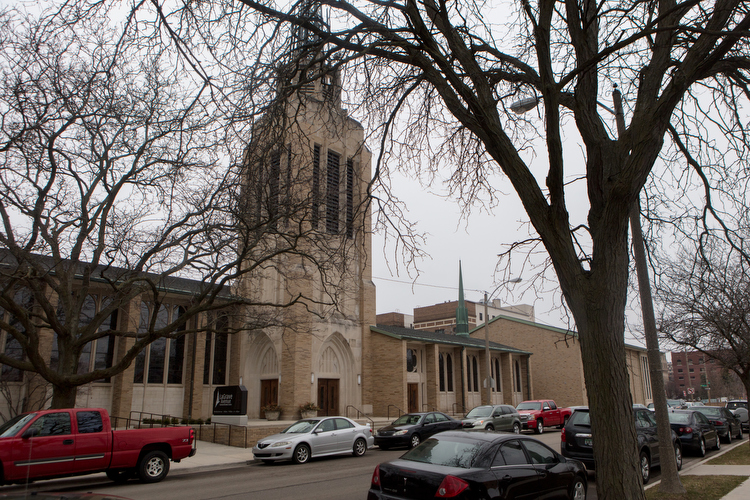
Meanwhile, churches like LaGrave Community Church and Crossroads Bible Church are volunteering to sponsor renovations. This support, along with other social investing strategies, could allow ICCF to begin adding more properties to the portfolio, as refurbished homes are phased out into homeownership.
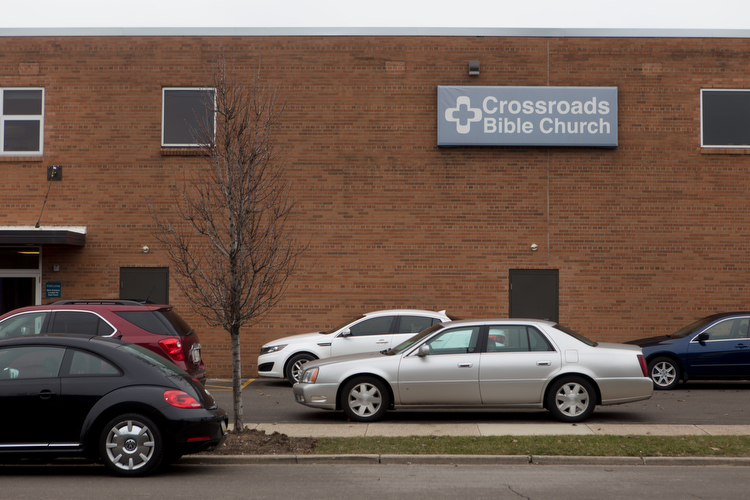
“Our hope is that this will be a revolving pool of houses,” says VerWys.
Dwelling Place is another big player in Grand Rapids’ affordable housing market. However, this nonprofit housing developer relies largely on HUD incentives to build and maintain properties for rent subsidized and permanent supportive housing (PSA). Of Dwelling Place’s 754 managed units in Heartside, 355 units are PSA, 552 are rent subsidized. But some housing types have different maintenance needs than others.
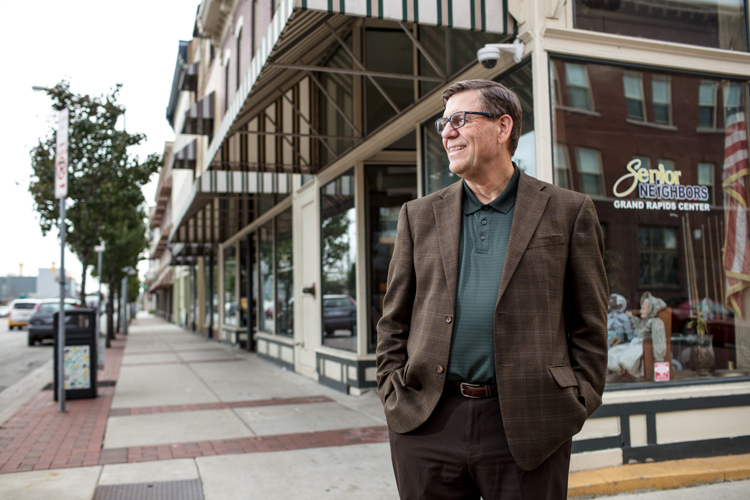
“Permanent supportive housing tends to target higher needs homeless individuals and families than rapid rehousing,” Dwelling Place Executive Director Dennis Sturtevant says, “which means the tenants are more likely to need services.” This is one of the reasons why Dwelling Place employs eight full-time social work staff, funding for which is supported by Dwelling Place’s own fundraising and United Way matching grants. Social workers provide referrals, advocacy, educational, and sometimes direct services.
Services like case management, however, are often rationed by needs factors, limiting their availability. Meanwhile, a recent loss of significant federal funding for local mental health services providers has led to a significant loss in Dwelling Place’s ability to place mental health professionals on site at many of their developments.
“We’re being asked to develop all these units,” Sturtevant says, “but the state and federal government folks are not going to stand behind us on this [issue of mental health]. It’s a failure on the part of the federal government.”

A more standard industry approach to developing affordable housing is exemplified by Midland-based developer Brookstone Capital, led by principal Karl Chew, who Mlive reporter Jim Harger dubbed a “kingpin” of downtown’s housing scene in 2013. Chew combines income restricted affordable housing with market rate housing, as with the 14-story building being built currently at 20 E. Fulton, which has received tax credits for “up to half” of its 96 to 108 units to be rent restricted.
While income restricted housing can help low income residents secure housing, according to local students, educators, and city planners, this housing model often excludes students and those with middle incomes too high to qualify for income restrictions, yet too low to afford market rate—i.e. development’s dreaded “missing middle.”
Yet income-restricted housing is often used synonymously in conversations about affordable housing, making it difficult to determine exactly what community needs are being addressed by various proposed projects.

To the folks at Community Rebuilders, a nonprofit focused on rapidly rehousing the homeless, effects of a “housing crisis” have been negligible. For over 25 years, this organization has made inroads in housing the homeless and housing insecure by leveraging close relationships with the private rental market—across all housing types, “affordable” and otherwise. In 2016, Community Rebuilders helped to connect 786 homeless households with permanent housing, with 92 percent retaining housing after 12 months.
“In the 25 years we’ve been doing this, housing the most vulnerable people in Kent county was never easy, even when housing was cheap,” says Director of Advancement and Community Jeffrey King. “For us, it’s just as hard now as it was then. Yes the market has changed a little, but based on the numbers we serve and our contacts in the rental market, it doesn’t feel that tight.”
Incentivized affordable housing is part of the mix, King says, but is by no means the key. “It’s that relationship with the private rental market that’s allowed us to have such success,” he adds. “A lot of landlords and property managers really are committed to ending homelessness, housing vulnerable populations—they want to be part of the solution.”
Meanwhile, other alternatives to subsidized affordable housing do exist, albeit these models are in their infancy. Community Land Trusts present a potential solution for some neighborhoods by lowering the cost barrier of homeownership through a trust ownership of the land. While these trusts can be complex and difficult to understand, and though they lower the investment value of homeownership, trusts could present a viable way to preserve affordability—especially in hot markets, observes Lott.
“The structural problem is that—depending on your definition of affordable—housing is a commodity that costs what it costs. We have few options to create more cheaply in the marketplace: government subsidy, build smaller, build shittier, build in higher quantities, build faster. All of those require trade offs—many of which are abhorred by many people in our community. There is no easy solution,” Lott says.
“Affordable housing needs to be addressed with zoning,” says Lott’s business partner and fellow architect Greg Metz. “It needs to be near bus routes and BRT lines especially, it needs to be near stores and places of possible employment…it needs to be thought of as a mini village, a neighborhood. What do people in affordable housing need most? Do they need childcare? Transportation? Food? What is most important? Design to that.”
While traditional developers like Chew focus on creating a mix of market rate and subsidized housing, and nonprofit entities like ICCF work with private investors to preserve genuine affordability in neighborhood homeownership, still others are thinking of more out of the box solutions. The Grand Rapids Alliance of Cooperative Communities provides a working model for residences which innovate away from the single family home model. Meanwhile, Metz looks to the modular, mass customized model of urban problem-solving work of architects like Richard Rogers and Alejandro Aravena, calling for problem solving via design competitions among Grand Rapids’ rich pool of design talent.
While the state of the “housing crisis” is troubled and unclear, one thing is for sure: Grand Rapids’ community isn’t lacking the potential for innovative solutions.
This article is part of a nationwide series on housing across the many publications of Issue Media Group. As cities grow and the population as a whole becomes more urban, housing is an ever-pressing issue. Tackling the tough topics at the heart of where and how people live, IMG invites you to explore housing in all its iterations over the next year.
Marjorie Steele is a poet, journalist, publisher, and boomerang West Michigander. Currently teaching at KCAD of FSU, Marjorie’s works can be found at medium.com/@creativeonion and
Photography by Adam Bird of Bird + Bird Studio.


